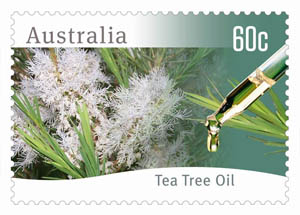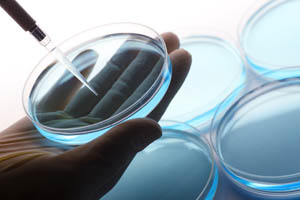by Christine Carson, PhD
 An experienced group of US-based researchers (Cuaron et al. 2014) have recently published a paper with the title “The Isolation of Staphylococcus aureus Tea Tree Oil-Reduced Susceptibility Mutants” in the journal Phytotherapy Research (impact factor 2.068). The abstract is available here. As the title says, they have managed to isolate bacteria, in this case Staphylococcus aureus, that have a reduced susceptibility to tea tree oil. So does this mean that tea tree oil is losing its ability to inhibit and kill bacteria?
An experienced group of US-based researchers (Cuaron et al. 2014) have recently published a paper with the title “The Isolation of Staphylococcus aureus Tea Tree Oil-Reduced Susceptibility Mutants” in the journal Phytotherapy Research (impact factor 2.068). The abstract is available here. As the title says, they have managed to isolate bacteria, in this case Staphylococcus aureus, that have a reduced susceptibility to tea tree oil. So does this mean that tea tree oil is losing its ability to inhibit and kill bacteria?
There are several methods that you can use in the laboratory to try and make bacteria resistant to antimicrobial (bug-killing) compounds. These methods are used in research to find out if bacteria are likely to develop resistance to a test substance. Several independent research groups have used some of these methods to try and make bacteria resistant to tea tree oil. Whichever method they choose, the aim is to see if they can make bacteria grow in the presence of a tea tree oil concentration that previously inhibited or killed them.
The lowest concentration of oil that inhibits the growth of a bacterium is called the Minimum Inhibitory Concentration (MIC) while the lowest concentration of oil that kills a bacterium is called the Minimum Bactericidal Concentration (MBC). If you can increase the MIC and/or the MBC of a compound against a particular bacterium, then you could say you’ve made your bacteria resistant to that compound. It’s a bit more complicated than that depending on whether your antimicrobial compound is used topically or systemically, but that’s the gist of it. Tea tree oil is only recommended for topical use, so any increase in MICs or MBCs might be cause for concern.
 The researchers used a couple of well-known methods to try and make their bacteria resistant to tea tree oil. Note, their tea tree oil complied with the international standard for the oil (ISO 4730). In one of the methods they used two different strains of S. aureus. One strain was methicillin-susceptible (MSSA) while the other was methicillin-resistant (MRSA). They managed to increase the MICs from 0.27% to 0.38% in the methicillin-susceptible strain and from 0.17% to 0.29% in the methicillin-resistant strain. When they took these less susceptible isolates and grew them again without any tea tree oil present, upon subsequent MIC testing, the MICs reverted back to their original values. So the change in susceptibility wasn’t permanent. It was just transient.
The researchers used a couple of well-known methods to try and make their bacteria resistant to tea tree oil. Note, their tea tree oil complied with the international standard for the oil (ISO 4730). In one of the methods they used two different strains of S. aureus. One strain was methicillin-susceptible (MSSA) while the other was methicillin-resistant (MRSA). They managed to increase the MICs from 0.27% to 0.38% in the methicillin-susceptible strain and from 0.17% to 0.29% in the methicillin-resistant strain. When they took these less susceptible isolates and grew them again without any tea tree oil present, upon subsequent MIC testing, the MICs reverted back to their original values. So the change in susceptibility wasn’t permanent. It was just transient.
There are a few major points to come out of these results. Firstly, the increases in MIC are pretty minor in comparison to what happens when antibiotics are tested in this way. Usually, antibiotic MICs at least quadruple or more! These MICs haven’t even doubled. Secondly, when antibiotic MICs increase in these types of tests, they are often permanent. Even if you grow the bacteria afterwards in the absence of the antibiotic, the increased MICs often remain elevated. Finally, changes in the MIC of the magnitude seen here and in other studies are unlikely to compromise the ability of tea tree oil to kill bacteria in practice. Most products formulated to exploit the antimicrobial activity of tea tree oil contain sufficient tea tree oil to render such small changes in the MIC unimportant. That is, even if the MICs have gone up a bit, there is still enough tea tree oil there to inhibit or kill the bacteria.
As mentioned above, there have been several independent attempts to make bacteria resistant to tea tree oil. None has managed to increase the MICs much more than 2-fold and in no case, has any change been permanent. So, although the researchers did manage to isolate bacteria that have reduced susceptibility to tea tree oil, tea tree oil is not losing its bug-killing punch.

Excellent article! I was recently turned on to the benefits of tea tree oil but wanted to do some research to ensure it’s safe and effective to use. This article cleared up some doubts for me, so thank you!
What is the difference in biochemistry that enables bacteria to become resistant to antibiotics permanently, but fails to do so with tea tree oil? I’ve been wondering about this for some time already.
Antibiotics are one (or occasionally two) chemical compounds. They inhibit the growth of, or kill, bacteria by messing with one specific aspect of bacterial metabolism. They work well when they disrupt a metabolic process in bacteria for which the bacteria can’t just put in place an easy workaround. Eventually though, the bacteria can adapt, evolve, acquire ways of getting around the one or two specific effects of the antibiotic. That is, the bacteria become resistant. Antibiotics are safe because the processes and cell features they target in bacteria often don’t exist in human cells. Consequently, antibiotics generally don’t mess directly with human cellular metabolism.
Tea tree oil is a mixture of more than 100 chemical compounds. The antibacterial compounds in tea tree oil tend to exert toxic effects on bacteria for which it is more difficult for the bacteria to work around. You could say the toxic effects of essential oils on bacteria are more general, and less specific, than the toxic effects of antibiotics on bacteria. For example, rather than inhibiting one or two biosynthetic steps in bacterial cell wall synthesis like many antibiotics do, essential oils are known to disrupt the membrane that surrounds the bacterial cell wall by barging their way in and undermining the structural and physical organisation of the membrane to the point where it is difficult for many functions in the cell membrane to work well anymore. The trade-off comes when you consider toxicity. Many of the processes and cell features in bacteria that are targeted by essential oil compounds also occur in human cells. Consequently, in addition to being toxic to bacteria, essential oil compounds may also be toxic to human cells.
Finally, as well as possibly exerting more general, harder to overcome toxic effects on bacteria, essential oils contain not one or two compounds toxic to bacteria, but dozens. Collectively, the compounds in an essential oil may act against bacteria using specific, general and sometimes overlapping mechanisms. While bacteria may eventually be able to overcome the effects of one or two compounds with very specific targets, it is another thing entirely to overcome the effects of dozens of compounds that may each have multiple effects. Mathematically, it is just more difficult.
Hi Christine, thank you for that logical explanation! Its so much fun reading your articles and getting that “aha” moments when the information you wrote helped me connect the dots together.